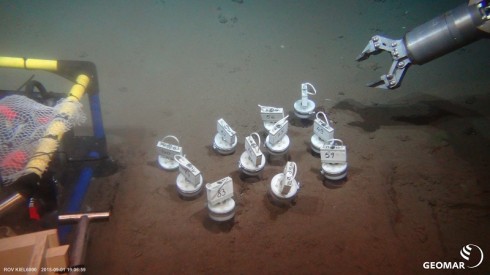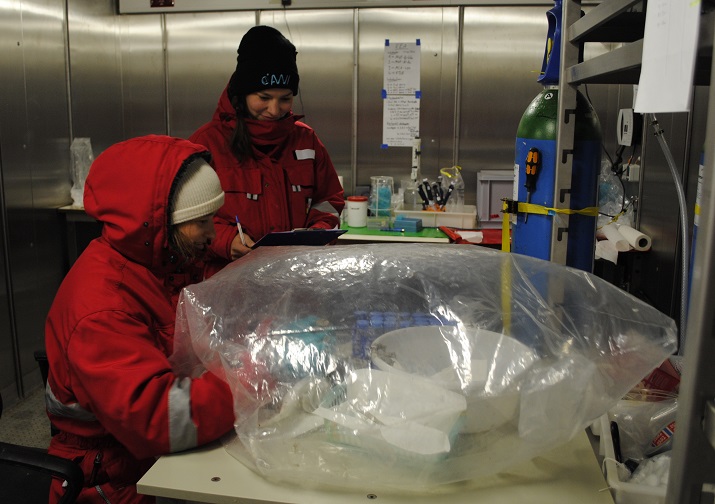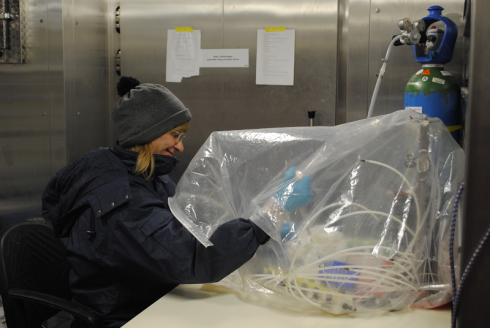¡Hola!
We are Seinab and Sophie from Jacobs University Bremen. It is the first big research cruise for both of us and we are excited to be part of it. Instead of looking at sea cucumbers and worms, we work with mud.
Here we would like to give an introduction to the geochemical sampling we carry out. As you know from previous blog posts, the overall goal of our cruise is to compare disturbed and undisturbed sites 26 years after the DISCOL disturbance experiment. We focus on biogeochemical cycling of trace metals in the sediment, pore water and bottom water. This can help to illuminate impacts of the potential release of heavy metals – some being toxic – from the sediment to the water column through disturbance, such as manganese nodule mining. On the first leg, we already took 10m long gravity core samples and shorter, about 40cm long cores with the Multicorer. The ROV with its cameras and robot arm used on this leg allows for more precise sampling.

The push cores are pushed into the sediment. The vakuum keeps the sediment inside when they are pulled out again. (photo: Kiel ROV 600, Geomar)
Our work starts when the ROV comes up in the evening. The first step is to bring the push cores into the 4°C cold room. The temperature on the seafloor is cold and the sediment should remain in similar conditions as much as possible. Therefore, we also do not want to expose it to oxygen. Only the first 10-20cm of our sediment here in the Peru Basin are oxic. All our sampling takes place in a so called glove bag – which is basically a plastic bag with incorporated gloves. This bag is filled with argon, a different gas which keeps the sediment free from oxygen. We scoop 2cm slices of sediment into tubes, which are subsequently centrifuged. Centrifuging separates the pore water from the sediment, so we can easily extract the pore water with a syringe and filter it. Our analyses are quite complex so that we take the samples home and will analyze them in our lab in the months following the cruise.
Seinab Bohsung and Sophie Paul (JUB)


Thank you,thats very interesting.Opa and I wish you a very good time.Many greetings in love Opa and Oma